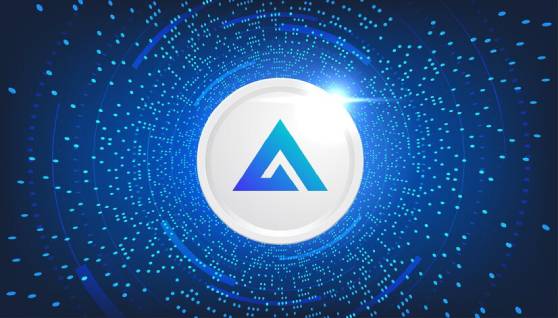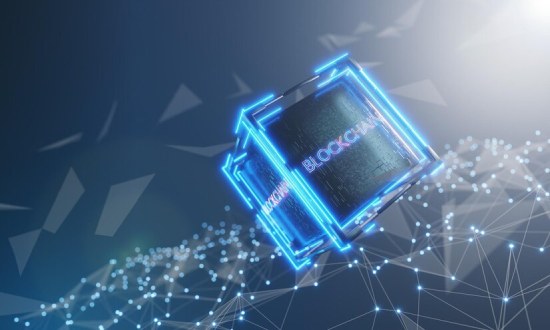-
In the fast-evolving landscape of blockchain technology, developers and enterprises alike are constantly seeking platforms that combine high performance, robust security, and scalability to drive next-generation decentralized blockchain app development. Avalanche has emerged as a standout choice in the Web3 ecosystem, offering unparalleled transaction speed, low fees, and a flexible infrastructure tailored for innovation. This comprehensive blog explores Avalanche's architecture, technical strengths, business applications, and why it is rapidly becoming the go-to development platform for Web3 projects.
Introduction to Avalanche Blockchain
Avalanche is a high-performance, scalable, and customizable blockchain platform designed to support decentralized finance (DeFi), enterprise applications, and next-generation Web3 solutions. Launched by Ava Labs, Avalanche differentiates itself through its innovative consensus mechanism, modular architecture, and commitment to creating an interoperable ecosystem. With its focus on speed, cost-efficiency, and security, Avalanche is quickly gaining traction among developers, investors, and institutions looking to leverage blockchain technology for real-world applications.
Why Avalanche Stands Out
High Throughput and Low Latency
Avalanche is engineered to process thousands of transactions per second (TPS) with near-instant finality. By using its novel Avalanche consensus protocol, the platform achieves high throughput without compromising security or decentralization. This makes it an ideal choice for applications that require rapid, real-time data processing and low-latency user experiences.
Energy Efficiency
Compared to traditional Proof of Work (PoW) systems, Avalanche's consensus mechanism is far more energy-efficient. This energy-efficient design not only reduces operational costs but also aligns with global sustainability initiatives, making Avalanche a greener choice for blockchain development.
Scalability and Customizability
Avalanche offers a unique modular framework that allows developers to create custom blockchain networks (subnets) tailored to specific use cases. This level of customizability means that enterprises can design their own blockchain ecosystems while still benefiting from Avalanche's underlying security and performance.
Interoperability
In today's diverse blockchain environment, interoperability is crucial. Avalanche facilitates seamless communication between different blockchain networks, allowing for the integration of various digital assets and data streams. This interoperability enables cross-chain functionality, fostering innovation and expanding the reach of decentralized applications.
Also, Read | Avalanche Blockchain Development | Built for dApps and DeFi
Technical Architecture of Avalanche
The Avalanche Consensus Protocol
At the heart of Avalanche lies its innovative consensus protocol, which diverges significantly from traditional mechanisms like PoW and even Proof of Stake (PoS). Instead of relying on a linear chain of blocks, Avalanche uses a directed acyclic graph (DAG) structure combined with repeated random subsampling. This method enables the network to quickly and securely reach consensus while remaining robust against attacks such as double-spending and Sybil attacks.
Key Features of the Avalanche Consensus Protocol:
- Scalability: The protocol can support a large number of validators, enabling the network to scale horizontally without sacrificing performance.
- Rapid Finality: Transactions are confirmed in seconds, providing a near real-time experience.
- Robust Security: The probabilistic nature of the consensus ensures high security, as an adversary would need to control a significant portion of the network to disrupt operations.
- Energy Efficiency: Minimal computational power is required, making the system more sustainable compared to PoW-based networks.
Avalanche's Network Structure
Avalanche's architecture is composed of three built-in blockchains, each serving distinct purposes within the ecosystem:
X-Chain (Exchange Chain):
The X-Chain is used for creating and exchanging digital assets. It employs the Avalanche consensus protocol to manage asset transactions quickly and efficiently.C-Chain (Contract Chain):
The C-Chain is Ethereum Virtual Machine (EVM) compatible, allowing developers to deploy smart contracts and dApps using familiar tools and programming languages such as Solidity. This compatibility ensures that developers transitioning from Ethereum can do so with minimal friction.P-Chain (Platform Chain):
The P-Chain is responsible for coordinating validators, managing subnets, and handling metadata. It plays a critical role in maintaining the overall health and organization of the Avalanche network.Subnets: Customizable Blockchain Networks
One of Avalanche's most innovative features is the concept of subnets. Subnets are independent networks within the Avalanche ecosystem, each capable of having its own unique rules and governance structures. This modular approach allows businesses and developers to create tailored blockchain solutions for specific needs, such as compliance with regional regulations, customized asset management, or enterprise-level security protocols.
The Developer Experience on Avalanche
Seamless EVM Compatibility
The C-Chain's full compatibility with the Ethereum Virtual Machine (EVM) makes it easy for developers to port existing Ethereum dApps onto Avalanche. This feature significantly lowers the barrier to entry by allowing developers to utilize familiar programming languages, tools, and development frameworks.
Comprehensive Developer Tools
Avalanche provides an extensive suite of developer tools and resources, including:
- Avalanche Wallet: A secure and user-friendly wallet for managing digital assets and interacting with dApps.
- AvalancheJS: A robust JavaScript library that facilitates seamless interaction with the Avalanche network.
- Documentation and SDKs: Detailed documentation, software development kits (SDKs), and tutorials empower developers to build, test, and deploy applications with ease.
Smart Contract Development and DeFi
The platform's support for Solidity and other smart contract languages enables the rapid development of decentralized finance (DeFi) applications. From automated market makers (AMMs) and lending platforms to yield farming protocols and synthetic assets, Avalanche offers a fertile ground for innovative financial solutions.
Interoperability with Other Blockchains
Avalanche's ability to interact with other blockchain networks through bridges and interoperable protocols ensures that developers can create applications that leverage the strengths of multiple ecosystems. This interoperability broadens the scope of potential applications and fosters a more connected Web3 landscape.
Also, Check | A Guide To Creating a Subnet on Avalanche
Business Applications of Avalanche
Enterprise-Grade Solutions
Avalanche's scalable and customizable architecture makes it an attractive platform for enterprise applications. Companies can build private or consortium blockchains on Avalanche that meet stringent performance and compliance requirements. Industries such as finance, supply chain management, healthcare, and real estate can leverage Avalanche for secure, efficient, and transparent operations.
Decentralized Finance (DeFi)
Avalanche's high throughput and low transaction fees are particularly beneficial for the DeFi sector. The platform supports a wide range of financial applications, including:
- Decentralized Exchanges (DEXs): High-speed, low-cost trading platforms that offer a superior user experience.
- Lending and Borrowing Protocols: Secure and efficient systems for collateralized loans and decentralized lending.
- Stablecoins and Payment Solutions: Digital currencies and payment systems that benefit from Avalanche's rapid transaction finality.
Digital Identity and Data Management
With its robust security features and customizable subnets, Avalanche is well-suited for digital identity management and secure data sharing. Enterprises can build blockchain-based identity solutions that ensure data privacy, prevent fraud, and streamline verification processes.
NFT Marketplaces and Gaming
The low fees and high speed of Avalanche make it an excellent platform for non-fungible token (NFT) marketplaces and blockchain-based gaming. Developers can create NFT ecosystems where creators, gamers, and collectors interact seamlessly, without the high transaction costs associated with some other networks.
Also, Discover | NFT Marketplace Development on Avalanche
Strategic Advantages for B2B Partnerships
Cost Efficiency and Performance
For businesses, the cost of transaction fees and the speed of processing are critical factors. Avalanche's ability to handle high volumes of transactions at a fraction of the cost of some legacy systems translates into significant operational savings and a competitive edge in rapidly changing markets.
Customization for Regulatory Compliance
Enterprises operating in highly regulated environments require blockchains that can be customized to meet legal and compliance standards. Avalanche's subnets offer the flexibility to implement tailored governance and regulatory measures, ensuring that businesses remain compliant without compromising on performance.
Ecosystem Growth and Developer Community
Avalanche has fostered a vibrant ecosystem of developers, investors, and enterprises. The active community support and continuous innovation provide businesses with confidence in the platform's long-term viability. Partnering with Avalanche opens doors to collaborative opportunities, joint ventures, and access to cutting-edge technological developments.
How to Get Started with Avalanche
Step 1: Explore the Documentation
Begin by reviewing Avalanche's comprehensive documentation and developer guides. These resources provide detailed instructions on setting up development environments, deploying smart contracts, and interacting with the network.
Step 2: Set Up Your Development Environment
Leverage tools like AvalancheJS and the Avalanche Wallet to set up your development environment. With EVM compatibility, you can utilize familiar tools such as Remix, Truffle, or Hardhat for smart contract development.
Step 3: Build and Deploy a dApp
Experiment by building a simple decentralized application (dApp) on the C-Chain. This hands-on approach will help you understand the nuances of Avalanche's architecture and the benefits of its high throughput and low fees.
Step 4: Integrate with Other Blockchains
Explore interoperability by connecting your dApp to other blockchain networks. Utilize Avalanche's bridging protocols to create cross-chain applications that can leverage assets and data from multiple ecosystems.
Step 5: Engage with the Community
Join Avalanche's developer forums, social media channels, and community events. Engaging with the community not only provides valuable insights and support but also opens up opportunities for collaboration and partnership.
You may also like | Optimism Platform: Developing and Implementing Layer 2 Smart Contracts
Future Prospects of Avalanche
Continuous Innovation
Avalanche is continuously evolving, with frequent updates and new features designed to enhance scalability, security, and interoperability. Future developments are expected to further solidify its position as a leading Web3 development platform.
Expansion of Ecosystem Partnerships
As more businesses recognize the benefits of Avalanche, strategic partnerships and collaborations are likely to increase. These partnerships will drive further innovation and expand the ecosystem, making Avalanche an even more attractive option for enterprise and developer communities.
Adoption in Emerging Markets
With its emphasis on cost efficiency and scalability, Avalanche is well-positioned to drive blockchain adoption in emerging markets. These regions, which often face infrastructural challenges, can benefit immensely from Avalanche's fast, low-cost, and secure platform.
Frequently Asked Questions (FAQ)
Q1: What makes Avalanche different from other blockchain platforms?
A1: Avalanche offers a unique consensus protocol that combines high throughput, rapid transaction finality, and energy efficiency. Its modular architecture—comprising the X-Chain, C-Chain, and P-Chain—allows for custom blockchain subnets and interoperability, making it a versatile platform for a wide range of applications.Q2: How does Avalanche ensure fast transaction processing?
A2: Avalanche uses a novel consensus protocol based on repeated random subsampling, which enables the network to quickly reach consensus among a large number of validators. This design ensures transactions are confirmed in seconds, significantly reducing latency compared to traditional blockchains.Q3: Is Avalanche suitable for enterprise-level applications?
A3: Absolutely. Avalanche's customizable subnets and robust security measures make it ideal for enterprise applications. Businesses can tailor their blockchain networks to meet specific compliance and performance requirements while benefiting from the overall efficiency of the Avalanche platform.Q4: How does Avalanche support the development of decentralized applications (dApps)?
A4: The platform's C-Chain is fully EVM-compatible, allowing developers to use familiar programming languages like Solidity. Comprehensive tools, documentation, and SDKs provided by Avalanche further simplify the development, deployment, and management of dApps.Q5: Can Avalanche interoperate with other blockchain networks?
A5: Yes, one of Avalanche's core strengths is its ability to facilitate cross-chain interactions. Through bridging protocols and interoperability features, Avalanche can connect with various blockchain networks, enabling seamless asset transfers and data sharing.Q6: What are the costs associated with deploying a dApp on Avalanche?
A6: Avalanche is designed to be cost-efficient. Transaction fees on the Avalanche network are generally low compared to other platforms like Ethereum, which makes it an attractive option for both developers and businesses looking to minimize operational costs.Q7: How do I start building on Avalanche?
A7: To get started, review the official Avalanche documentation and tutorials. Set up your development environment using tools like AvalancheJS, and experiment by deploying a simple dApp on the C-Chain. Engaging with the Avalanche community through forums and events can also provide valuable insights and support.Conclusion
Avalanche stands out as the go-to Web3 development platform by seamlessly combining high performance, robust security, and unparalleled scalability. Its innovative consensus mechanism, energy efficiency, and modular architecture make it an ideal choice for a wide range of applications—from DeFi and enterprise solutions to NFTs and cross-chain integrations. For businesses and developers seeking a reliable and cost-effective blockchain solution, Avalanche offers a flexible ecosystem that can be tailored to meet diverse needs.
As the demand for decentralized applications continues to grow, Avalanche's commitment to continuous innovation and community engagement positions it at the forefront of the blockchain revolution. By embracing Avalanche, organizations can unlock new opportunities, drive digital transformation, and stay ahead in the competitive Web3 landscape.
Whether you are an enterprise looking to implement a customized blockchain solution or a developer eager to build the next groundbreaking dApp, Avalanche provides the infrastructure, tools, and community support to bring your vision to life. With its proven track record and forward-thinking approach, Avalanche is not just a blockchain platform—it is the foundation upon which the future of decentralized technology is being built.
Note: This article is intended to serve as an in-depth resource on Avalanche as a premier Web3 development platform. For tailored advice and further consultation, please consider reaching out to experienced blockchain developers and industry professionals who specialize in Avalanche development.

Our Offices
INDIA
Emaar Digital Greens, Sector 61,
Gurugram, Haryana
122011.
Welldone Tech Park,
Sector 48, Sohna road,
Gurugram, Haryana
122018.















